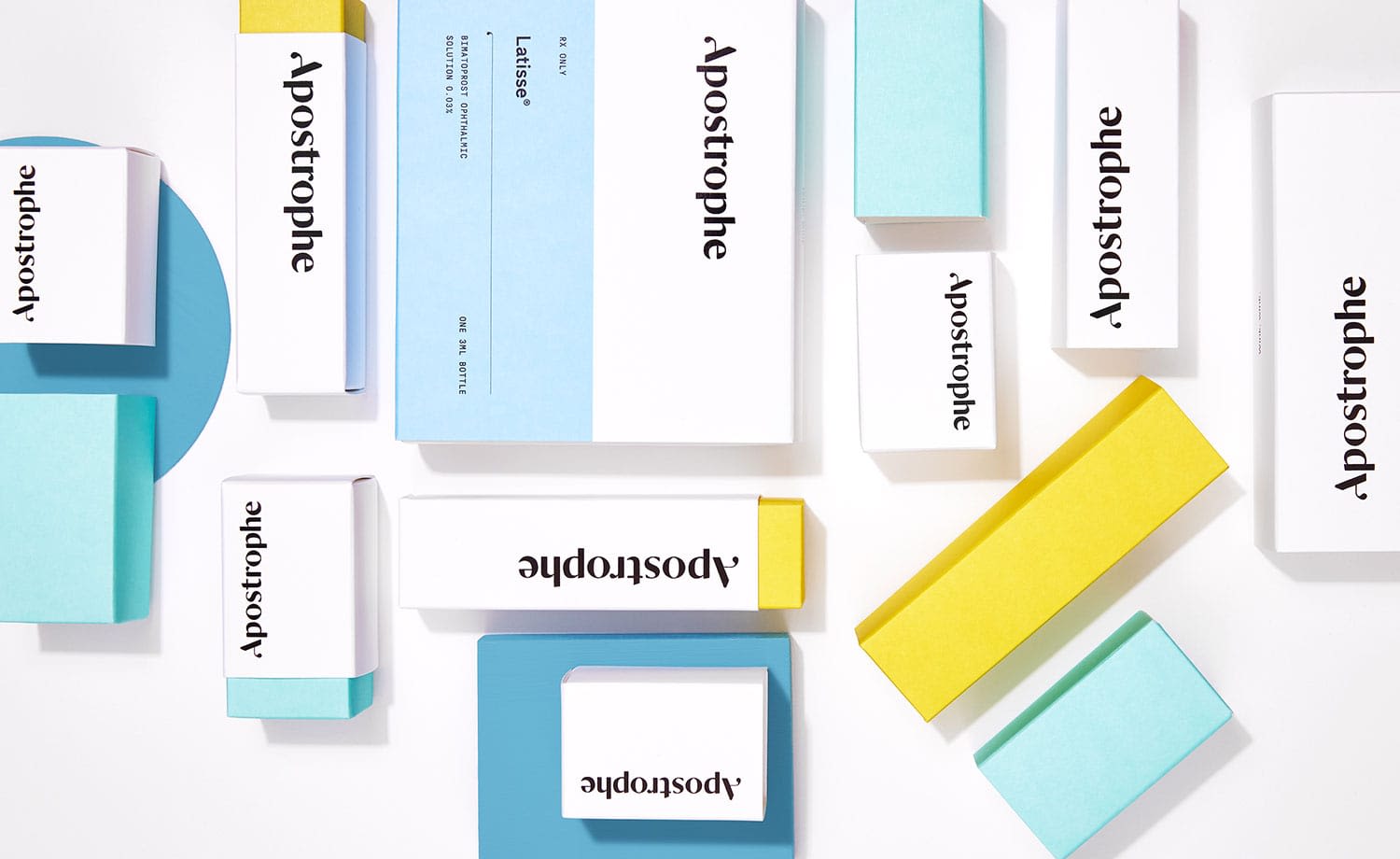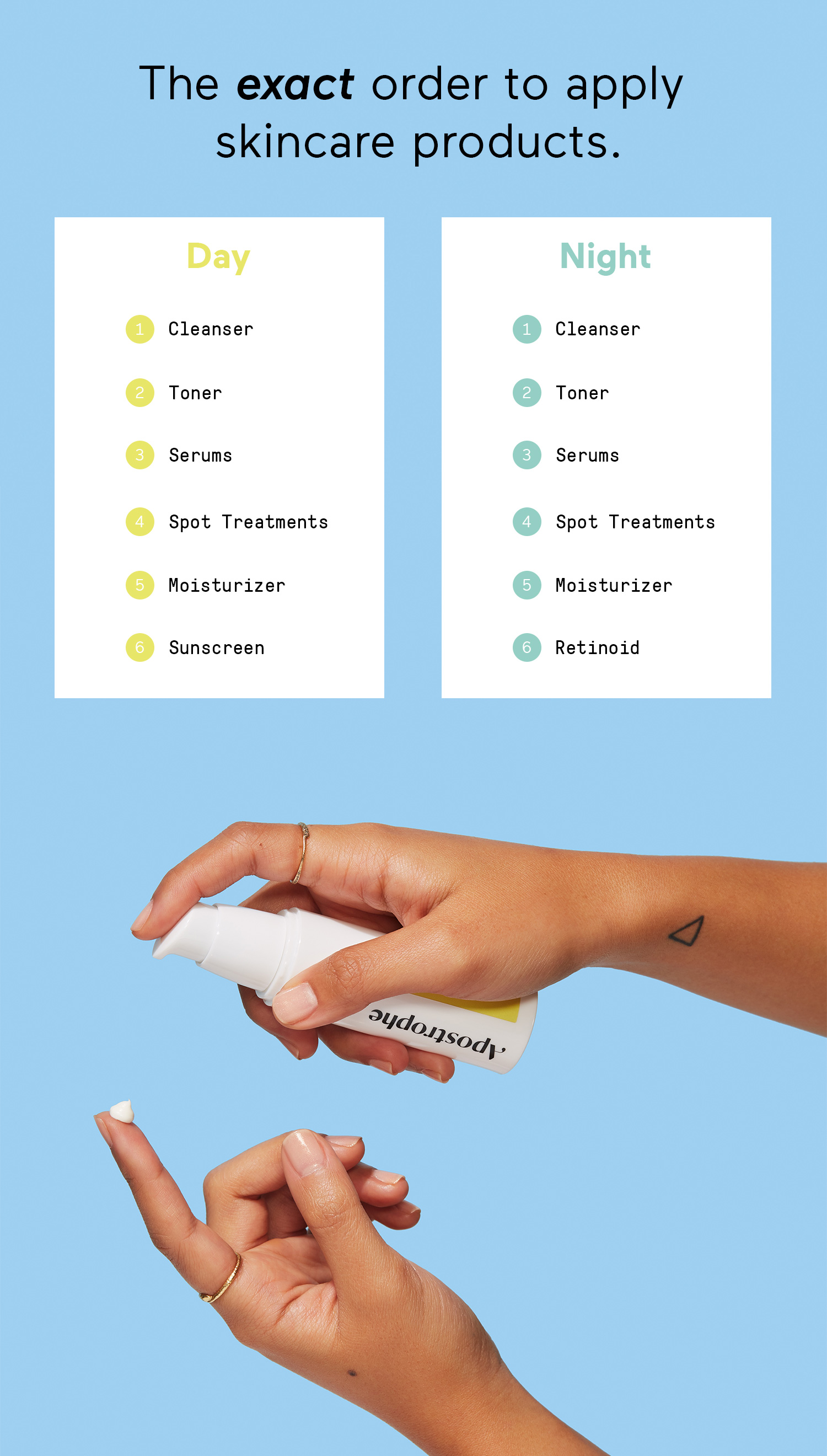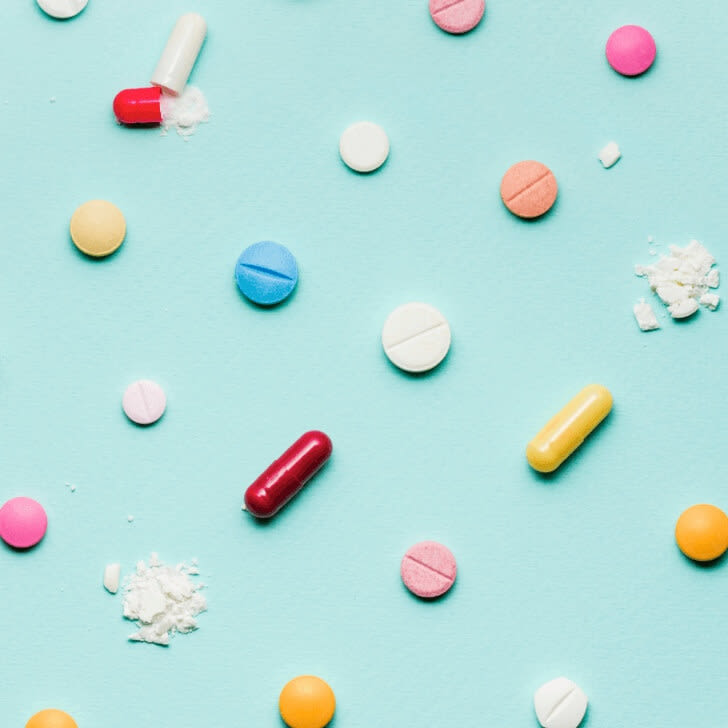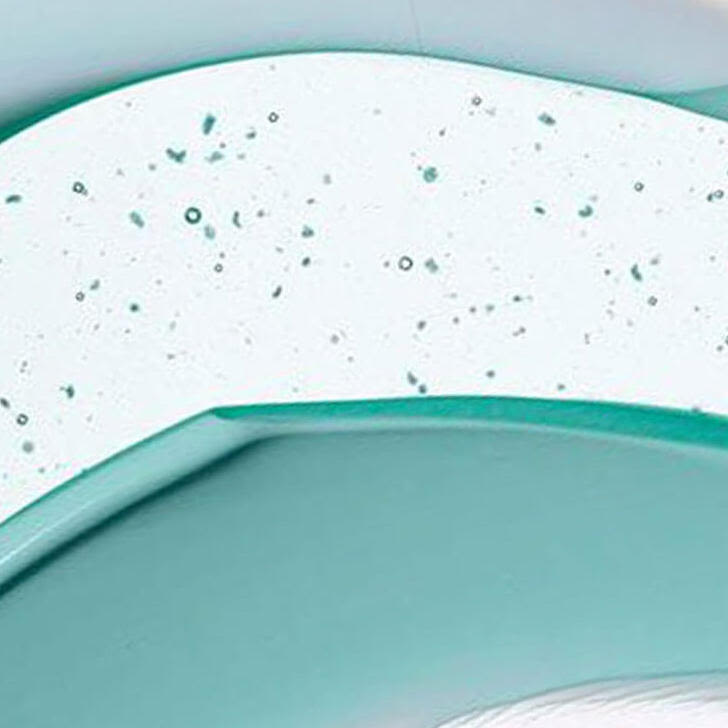Topical Clindamycin And Vitamin C


by Kathleen Morrison, Lead Writer //images.ctfassets.net/fc84yqnhe77u/XWw0Qjyn6ppnzrxFMEy3x/48afcb1f95008d4805eef52fce62e09a/IMG_7356.JPG?w=689&h=613&fl=progressive&q=80&fm=jpg
September 26th, 2019
2019-09-26T00:00-07:00
2021-07-12T23:54:53.573Z
Apostrophe
The subject of skincare is huge and complex. There are so many subjects to consider, from skin type, to the huge variety of concerns, to products, to trends. Not to mention the science behind skincare and skin health is evolving every day. That's why we've created our Ultimate Guide series. We want to tackle your questions about your skin and care routine all in one place. This guide explores all those names on your product labels. We are diving into ingredients – what they are, how they work together (or don't), and how to store your products to extend their shelf life and improve efficacy.
THE IMPORTANCE OF APPLICATION
The science behind skincare can get complicated, fast. Just like in a lab, combining the right ingredients at the right times and staying away from toxic mixtures is key to getting the results you want. We are here to help you decipher the difference and make sure your face doesn't become a failed science experiment!
You may notice an interesting difference in Apostrophe's topical acne treatments compared to the medications you pick-up at your pharmacy: many of our topical formulations include multiple active prescription ingredients in a single bottle. Compounding medications like this allows us to make completely custom formulas and use concentrations that aren't available anywhere else on the market. Combining proven medications into one cream or lotion is more convenient for you and makes it easier to keep taking the medication as directed by your dermatologist. It also allows us to tailor the non-active ingredients so they are hypoallergenic and have fewer undesirable effects than the ones in commercially available products.
Read on to learn which combos will keep you glowing and which ones you want to stay away from.
Perfect pairs
Tretinoin + Clindamycin – While tretinoin is very effective at addressing acne and fine lines and wrinkles when used alone, it is given a boost when combined with clindamycin. Clindamycin is an antibiotic that targets the inflammation and redness that accompany inflammatory acne. Like tretinoin, clindamycin can be very effective against acne when used alone. Apostrophe's Medical Director, Dr. Paik notes, "We combined clindamycin and tretinoin to enhance efficacy and to make it a cost-effective option for patients." That means more effective treatment with two power-house ingredients for a lower cost. It's a win-win!
Clindamycin + Benzoyl peroxide – Clindamycin is an antibiotic and as such, it is possible for any acne-causing bacteria on your face to develop resistance to it. Dr. Paik says, "Clindamycin is combined with benzoyl peroxide to help with efficacy and to prevent antibiotic resistance. This combination makes clindamycin more effective and allows it to stay effective over time." Since benzoyl peroxide keeps resistance from developing, the clindamycin can work longer and harder for you!
Tretinoin + Niacinamide – Apostrophe's topicals include niacinamide because niacinamide is the closest thing in skincare to a cure-all! Dr. Paik's thoughts on this useful treatment: "Our medications are combined with niacinamide to help with inflammation, reduce redness, and prevent post-inflammatory hyperpigmentation." Many acne-fighting medications like tretinoin (same goes for clindamycin) can cause dryness and irritation. Niacinamide helps soothe and calm the skin so you look your best while your treatments get to work busting those breakouts.
Hyaluronic Acid + Retinoid – Retinoids like our Tretinoin Formula are key to fighting skin texture, fine lines, and wrinkles, but these products can make your skin extra dry and sensitive during the initial adjustment period. Luckily, hyaluronic acid is here to help! This compound is so good at holding on to water that it is often used in fillers for that plump, juicy effect. When applied topically, hyaluronic acid smoothes and moisturizes the skin so your retinoids can get to work without the dryness and irritation.
AHAs + BHAs – These two types of acids are the perfect partners in crime. AHAs help tackle fine lines, hyperpigmentation, and acne while BHAs reduce skin texture and keep pores clear (say goodbye to blackheads!). The result is smooth, glowing skin.
Vitamin C + Vitamin E – Vitamin C and E are both antioxidants which means they can work together to fight skin damage from free radicals and UV rays. In fact, studies show that pairing these compounds topically has documented UV protective effects beyond those of each ingredient on its own. This extra protection can add a boost to your daily sunscreen application (which you are definitely already doing, right?).
Devilish Duos
AHAs/BHAs + Vitamin C – Vitamin C is known for its ability to even out skin tone and make your skin glow, but it is a very fickle skincare ingredient. Its effectiveness relies on it remaining stable in its formula, but it can easily become unstable with changes in pH or exposure to light (you'll know your product has oxidized if it becomes dark orange or brown). Some acids may change the pH of your vitamin C serum and render it inactive so if you're planning on using both in your routine, save vitamin C for the morning and apply your acids at night.
Retinol + Salicylic Acid – Retinol and salicylic acid both have a tendency to cause peeling and dryness as they work to keep pores clear. Unfortunately, pairing these ingredients doesn't lead to extra clear pores, but it can lead to extra dry skin. If you want to incorporate both into your routine, use them on alternate days and monitor your skin carefully. Give your skin a break if it becomes red and irritated.
Benzoyl Peroxide + Tretinoin – The jury is still out on this combination. Many sources report that benzoyl peroxide and tretinoin deactivate one another, rendering each ingredient ineffective. However, there is one study that did not find any degradation of 0.05% tretinoin gel with 6.26% benzoyl peroxide. Until there is more research, we recommend staying away from this combo so you can be sure you're getting the most out of your products! If you do want to get the benefits of both ingredients, you can use a benzoyl peroxide cleanser before you apply tretinoin, or stagger your application (BPO in the morning and tretinoin at night or use them on alternating days).
When and how to apply
Now that you know which products play well together and which don't, it's important to know exactly when and in what order to apply them. There's no need to include every ingredient or product in your routine, but you can maximize the effectiveness of the ones you do include by applying them at the right time and in the right way.

This order of application comes derm-recommended, courtesy of our medical director, Dr. Aimee Paik! Almost all of these products can be applied in the morning, in the evening, or both. What determines their place in your routine is the active ingredients in each product.
Cleanser – A cleanser isn't always necessary in the morning. Rinsing with lukewarm water can be enough to refresh and prep your skin for the day. If you do opt for an AM cleanser, keep it gentle to avoid redness and irritation. In the evening, a cleanser is key for removing makeup, pollutants, and general dirt and grime from your day. Skip the makeup wipes and use micellar water or an oil-based remover instead – these products thoroughly breakdown makeup and won't leave you with residue that can break you out. Follow-up with a gentle, hydrating cleanser to soothe and prep skin for your nighttime routine.
- Application: Use your fingertips to apply your cleanser to damp skin and rub it in using circular motions to get in all the nooks and crannies. Don't be afraid to take your time so the product can do its work! Rinse well.
Toner – The most important part of using toners is to remember to stay away from alcohol-based ones! Toners with alcohol only serve to dry out your skin. Dry, flaky skin can actually be more prone to breakouts and inflammation than properly hydrated, but oily, skin. If you do have acne, a toner with an AHA like glycolic acid or lactic acid can help clear pores and prevent breakouts.
- Application: Since toner is often designed to remove residue, wiping it on is typically more effective than spraying. Apply some to a cotton pad and swipe outwards from the center of the face.
Serum – Serums can be heavy hitters in your skincare routine. They are ultra-concentrated formulations with nutrients and antioxidants that immediately help to brighten and hydrate your skin. In the morning, a vitamin C serum can help protect from inflammation and lighten dark spots, while an evening serum with hyaluronic acid will plump, smoothe, and moisturize overnight.
- Application: Make sure you apply enough to get even coverage all over. Lightly pat and smooth serum with your fingertips and avoid the urge to massage it into your skin – serums soak in best on their own.
Spot treatments – You can use a spot treatment day or night, just make sure you're aware of what other active ingredients you may be layering on (stay away from combining spot treatments with other irritating or drying treatments, like retinol or acids). Benzoyl peroxide is great on classic whiteheads, while salicylic acid works on clogged pores and inflamed bumps.
- Application: There's no need to pack it on! Apply a thin layer over spots and bumps and wait for it to dry before applying your moisturizer.
Moisturizer – All skin types benefit from a moisturizer (including you oily types!). Choose a light, non-greasy moisturizer with an SPF of at least 30 during the day, unless you are planning on applying a separate sunscreen later. Your skin works hard to repair damage while you sleep and you can help it with a rich moisturizer in the evening.
- Application: Massage moisturizer into your skin firmly with your fingertips. Make sure you are getting an even application all over your skin so product doesn't build up in any one place and cause breakouts. And don't forget your neck! Skin on the neck can be more delicate than on the face and needs just as much hydration to prevent wrinkling and sagging.
Tretinoin – Tretinoin helps smooth the skin and fight acne by increasing cell turnover. If you're using this prescription ingredient, be sure to only apply it at night! Tretinoin increases your skin's sensitivity to the sun and can make you more susceptible to sun damage. Only apply it in the evenings and always wear sunscreen during the day.
- Application: Smooth tretinoin on evenly with your fingertips. If you find you are experiencing burning or peeling while your skin adjusts to this treatment, you can buffer the tretinoin by mixing it with your moisturizer before applying and/or applying it a couple times a week and gradually increasing your frequency of application. Remember: irritation is not correlated with effectiveness! You are getting the benefits of the tretinoin regardless of whether or not your skin is irritated, so there is no need to endure the side effects if you can avoid them.
Sunscreen – We don't have to tell you this is the most important step in your routine! Always apply an SPF of at least 30 to prevent UV damage and keep your skin healthy.
- Application: Use the same technique you used to apply your moisturizer. Fingertips, firm pressure, and even application to get good UV protection every time.
THE IMPORTANCE OF SKINCARE STORAGE
Where do you keep your skincare products? In your medicine cabinet? By the bathroom sink? On your vanity? These are common places to find creams, serums, and treatments in most of our houses. Do you need to be doing more? We're breaking down everything you need to know about storing your skincare.
It's all about your active ingredients
Like everything discussed in this guide, storage comes down to what active ingredients are in your products. We've already talked about how finicky vitamin C can be – keep it away from light, air, and heat. You can extend the life of your vitamin C serums by keeping them tightly capped and in the fridge. Retinoids can also be deactivated by sunlight so keep those in a cool, dark place like a medicine cabinet or drawer. Moisturizers and eye creams can also benefit from being kept in the fridge. Not only will they feel cool and refreshing when you apply them, but the chilly temperatures will slow down bacterial growth. You definitely want to keep that away from your eyes!
Speaking of bacteria...
Be honest: when was the last time you washed your makeup brushes? Brushes, sponges, and other makeup applicators are rich breeding grounds for all kinds of bacteria. Regular cleaning will limit how much of this bacteria is transferred to your face (you really can't do it too often!). Keeping tools in a cool and dry location also helps – that means no bathroom counters. Bacteria and mold love a warm, steamy environment in which to grow and your shower will provide both those things in spades. Instead, move them to a dry place out of direct sunlight. Your skin will thank you.
Skincare fridges – what's with the hype?
You may have read about skincare fridges in magazines or on Reddit forums, but are they functional and worth the extra space and money? As we mentioned earlier, a few products can benefit from storage in your refrigerator's cool, dark environment. You can extend the life of particularly unstable actives, like vitamin C, by keeping them in your fridge. Gel-based products also feel extra nice and soothing on irritated skin when they come straight from the fridge (pro-tip: throw aloe vera gel in the fridge before heading to the beach or the pool – it will feel great when you come back from being out in the sun all day). Clay-based products like masks also have a tendency to dry out at room temperature. Keeping them cool will extend their shelf-life as well as feels great on the skin. Be careful not to keep products too chilled though. Lotions and creams can become very unstable if they are frozen and then thawed.
So is a skincare fridge worth it? There are definite benefits of storing in colder temperatures, and you can always throw your skincare into the kitchen fridge next to your produce. But a small one by your vanity is a nice luxury if you feel like splurging. (Plus, they're too Instagrammable. Look how cute they are!)
SKINCARE INGREDIENTS FROM A TO Z
Have a question about a specific ingredient? Here's your resource for looking up all those names on your product labels. It is important to note that even if products claim to have these ingredients in the product, that does not mean the benefits are guaranteed. Some ingredients need to reach a certain concentration or strength for your skin to see results. Make sure to do some extra research before buying into marketing claims. In addition, product shelf life and stability needs to be taken into account - a product manufactured months or years ago will not be as effective as a "fresh" batch. Read on to learn more about how different active skincare ingredients work, where they come from, and what they do for your skin.
Alpha Hydroxy Acids (AHA) – Alpha hydroxy acids or AHAs are a group of organic carboxylic compounds including glycolic acid (from sugar cane), citric acid (from citrus fruit), lactic acid (from milk and pickled vegetables), malic acid (from apples) and tartaric acid (from grapes). Alpha hydroxy acid preparations are recommended for those whose skin is showing signs of ageing. Fine lines, brown marks, and dry spots (actinic keratoses) can improve with regular applications or peels. Glycolic acid may also prove helpful for those prone to acne.
Argan oil – Argan oil is pressed from the kernels of the argan tree (Argania spinosa). It works as a moisturizer and emollient and has been shown to increase skin elasticity when applied topically. A 2013 study also showed the protective effect it can have against damage when applied after coloring the hair.
Argireline – Argireline's generic name is acetyl hexapeptide-3 or acetyl hexapeptide-8 (quite the mouthful!). Lipotec, the manufacturers of Argireline, claim its peptides are able to inhibit the neurotransmitters that control small facial movements, and thus, reduce wrinkles.
Ascorbic Acid – Ascorbic acid is an antioxidant proven to be effective in protecting against photoaging of the skin when manufactured in a stable formulation. It is available in serums, liquids, creams, and even powder. It is important to note that if ascorbic acid is not stable, it will oxidize in solution and may contribute to blackheads. See vitamin C.
Avobenzone – Avobenzone is a dibenzoylmethane derivative. It degrades quickly on its own when exposed to sunlight so it is often combined with photostabilizing ingredients that give it staying power in sunscreen. Does not protect against UVB rays. Found in chemical sunscreen.
Azelaic acid - Azelaic acid is a natural material produced by a yeast that lives on normal skin, Malassezia furfur (also known as Pityrosporum ovale). It is used as a topical treatment for mild to moderate acne, and may be combined with oral antibiotics or hormonal therapy. It is useful for both comedonal acne and inflammatory acne and has the additional benefit of being safe for use during pregnancy.
Bactrim – Bactrim is an antibiotic contains the active ingredients sulfamethoxazole and trimethoprim. Because it can cause severe allergic reactions, this oral medication is typically prescribed for acne when other types of antibiotics have failed. It is also FDA approved to treat a number of other conditions and types of infections. Note: this is a prescription medication.
Bakuchiol – Often referred to as "nature's retinol," bakuchiol contains many of the same youth-boosting and acne-fighting properties as retinoids, but in a gentler, less irritating form. It is found in the plant Psoralea corylifolia (also known as Babchi) and has long been used in traditional Ayurvedic and Chinese medicine to treat skin conditions.
Benzoyl peroxide – Benzoyl peroxide is a common topical treatment for acne. It comes in creams, gels, and washes and is often used in conjunction with antibiotic treatment to reduce the risk of creating antibiotic-resistant bacteria (benzoyl peroxide itself cannot create resistant bacteria). It has antiseptic, oxidizing, and anti-inflammatory properties.
Beta Hydroxy Acids (BHA) – BHAs (like AHAs) are organic carboxylic compounds. Their chemical structure differs from AHAs by one carbon atom. Beta hydroxy acids are effective in reducing the appearance of fine lines and wrinkles, and improving overall skin texture, without the occasional irritation associated with the use of AHAs. See salicylic acid.
CBD oil – CBD, short for cannabidiol, is a compound found in the cannabis plant (read our blog post about it to learn more!). The research on its potential benefits is still in its infancy, but it seems to have anti-inflammatory effects and to be effective against certain types of dermatitis.
Clindamycin – Clindamycin is an antibiotic used to treat a number of different infections, but it is commonly prescribed topically to treat acne. Note: this is a prescription medication.
Doxycycline – Doxycycline is an oral antibiotic considered to be one of the most effective against acne. It is often used in conjunction with a topical treatment like benzoyl peroxide in order to prevent the development of antibiotic resistance. It's side effects can include sensitivity to the sun and gastrointestinal disturbance. Note: this is a prescription medication.
Hyaluronic acid - Hyaluronic acid draws moisture into the skin, causing it to become plump and hydrated. Also used in fillers (for the plumping effect).
Kojic acid – Kojic acid is produced from several different types of fungi. It inhibits and prevents the formation of tyrosine, an amino acid that is necessary for the production of melanin. Limiting melanin production can help lighten the skin and can be useful in treating hyperpigmentation as a result of acne scarring.
Marula oil – Marula oil comes from the marula fruit tree (Sclerocarya birrea) which is native to parts of Southern Africa. Packed with amino acids (L-arginine and glutamic acid), fatty acids, and antioxidants (phenolic compounds and vitamins E and C), this oil has hydrating, moisturizing, and anti-aging properties. It is also non-comedogenic which makes it a good option for those with acne-prone skin.
Minocycline – Minocycline is an oral antibiotic commonly prescribed to treat acne. Evidence of its efficacy against acne vulgaris is less established than that of doxycycline, and it is typically more expensive, so it is not usually prescribed as a first line of defense. Note: this is a prescription medication.
Niacinamide - A form of vitamin B3 found in food and used as a dietary supplement and medication. Its topical form smoothes wrinkles and skin texture, and increases moisture within the skin by improving water retention. It works in conjunction with antibiotics and anti-inflammatories to heal your skin from acne and rosacea more quickly, while also soothing the skin from the irritating side effects of some of those treatments. Plus, incorporating niacinamide into your routine is easy: simply find a moisturizer with niacinamide and apply as directed! (You can learn more about niacinamide's benefits in our blog!)
Octinoxate – Octinoxate is a cinnamate ester and absorbs UVB rays from the sun. It is often combined with nanoparticles and water-resistant ingredients to keep it localized to the skin and to prevent absorption. Found in chemical sunscreen.
Oxybenzone – Oxybenzone is a benzophenone derivative and absorbs UVB and UVA II rays from the sun to protect your skin. Found in chemical sunscreen.
Peptides – When amino acids link together, the chain they form is called an amino peptide. The most well known peptide in skincare is collagen, the protein that keeps your skin smooth and firm. As we age, the skin loses collagen which in turn contributes to wrinkles and sagging. Applying topical peptides may boost your skin's natural production of peptides like collagen.
Retinoid/retinol – Topical retinoids are over-the-counter or prescription creams, lotions and gels containing medicine derived from vitamin A. These compounds result in smoother, plumper, and more radiant skin and are often found in anti-aging skincare products. Many creams containing the related compounds retinol and retinaldehyde can be obtained over the counter at pharmacies and supermarkets, but prescription retinoids like tretinoin are far more effective than the retinol products you can purchase at drug and beauty stores.
Rosehip oil – Rosehip oil, or rosehip seed oil, comes from the Rosa canina rose bush. It is rich in vitamins and essential fatty acids, including linoleic and linolenic fatty acids. These nourishing elements make it good for moisturizing and hydrating the skin while vitamins A, E, and C aid in reducing inflammation and brightening the skin. A 2015 study using rosehip powder also showed significant anti-aging benefits to rosehip, including improvements to skin wrinkles, moisture, and elasticity.
Salicylic acid – In acne, topical salicylic acid helps slow down shedding of the cells inside the follicles, preventing clogging. Salicylic acid also helps break down blackheads and whiteheads. A type of beta hydroxy acid (BHA).
Spironolactone – Spironolactone is an androgen receptor antagonist often prescribed to treat hormonal acne in women. Simply put, it blocks the effects of androgens, like testosterone, on the body. Although these anti-androgenic effects means it is rarely prescribed for acne in men, spironolactone in women can have the result of decreasing sebum production caused by androgens. Less sebum often means fewer zits!
Squalane and squalene – Squalane and squalene are naturally occurring emollients and moisturizers that are produced in our skin. In skincare products, their moisturizing properties mimic those of our skin's natural moisture and they can smooth the appearance of fine lines and wrinkles and keep oily skin from looking overly greasy.
Tea tree oil – Tea tree oil comes from the leaves of Melaleuca alternifolia, a tree native to Australia. It's benefits primarily come from its antimicrobial properties and it has been shown in study after study to be effective against mild to moderate acne. It is important to note that tea tree oil acts differently on the skin than most other oils named in this resource. Tea tree's powerful antimicrobial effects can cause drying and irritating effects, especially on sensitive skins, so it is best to do a patch test before using.
Titanium dioxide – Titanium dioxide is a physical sunscreen that absorbs up to 400 nm of UV radiation and protects against both UVB and UVA rays. Physical sunscreen.
Tretinoin - Commonly known by its brand name Retin-A, tretinoin is a powerful vitamin A derivative that can treat acne and improve fine lines and wrinkles. Our Apostrophe dermatologists sometimes recommend tretinoin to smooth skin texture and address acne concerns. (Our own medical director, Dr. Aimee Paik, has used tretinoin since she was 16!). Common side effects are irritation, redness, and peeling. Note: this is a prescription medication.
Vitamin C – Vitamin C, or ascorbic acid, is an antioxidant proven to be effective in protecting against photoaging of the skin when manufactured into a stable topical formulation. It is available in serums, liquids, creams, and even powder. However, it is important to note that if the vitamin C is not stable, it will oxidize in solution and may contribute to blackheads. See ascorbic acid.
Zinc oxide – Zinc oxide is a physical sunscreen that absorbs up to 360 nm of UV radiation and protects against both UVB and UVA rays. Found in physical sunscreens.
You made it!
There's a whole world to explore when it comes to your skin and we are here to guide you. At Apostrophe, our goal is to cut through the marketing to deliver you information based on science and data. We rely on the expertise of our dermatologists to guide us so you can feel fearless as we navigate the complex world of skincare. At the end of the day, you can always feel confident in the care of a dermatologist and a treatment plan that addresses your unique needs
Welcome to the fine print! Just so you know, this article is not, nor is it intended to be, a substitute for professional medical advice, diagnosis, or treatment, and should never be relied upon for specific medical advice. It's always best to talk to a doctor for that stuff.
Prescription medication should only be used according to doctor's instructions. Do not use medication if you are allergic to one of its ingredients. Full list of safety information can be found at: apostr.com/side
Recommended Posts
Oral acne meds: an overview
Kathleen Morrison
2019-07-02T00:00-07:00
2021-10-06T18:18:26.434Z
Apostrophe
Slather - Oral acne meds: an overview
A blog article written for Slather, Apostrophe's blog, entitled Oral acne meds: an overview
Apostrophe Dermatology

Oral acne meds: an overview
Read
All about niacinamide
Kathleen Morrison
2019-07-16T00:00-07:00
2021-10-06T18:17:23.826Z
Apostrophe
Slather - All about niacinamide
A blog article written for Slather, Apostrophe's blog, entitled All about niacinamide
Apostrophe Dermatology

Read
Is visiting the dermatologist better online or in-person?
Kathleen Morrison
2019-03-08T00:00-08:00
2021-09-09T23:06:00.293Z
Apostrophe
Slather - Is visiting the dermatologist better online or in-person?
A blog article written for Slather, Apostrophe's blog, entitled Is visiting the dermatologist better online or in-person?
Apostrophe Dermatology

Is visiting the dermatologist better online or in-person?
Read
Topical Clindamycin And Vitamin C
Source: https://www.apostrophe.com/blog/ultimate-guide-ingredients/
